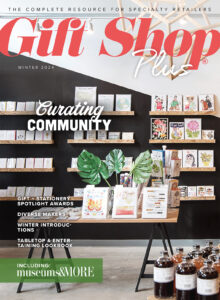Marketing to shoppers under 40
“Customer-centric” is a marketing buzzword that’s often used to describe the type of experience that attracts millennial and Gen Z consumers. Yet a recent slew of ridiculous crowd-funded campaigns – such as KFC’s Kentucky Fried Chicken hot tub and limited-edition gravy-scented candles – have many retailers wondering where brands should draw the line when it comes to customer-centricity. After all, most companies don’t have the excess capital to invest in an off-the-wall crowdfunding campaign to garner publicity. Young companies might even risk their reputations by asking consumers to invest in outlandish products that aren’t on-brand for their inventory.
What are some practical, yet still compelling ways that retailers can market to younger customers? Let’s take a look.
Understanding demographics and sub-groups
The Pew Research Center defines millennial consumers as those born between 1981 and 1996, whereas Gen Z was born in 1997 or later. In 2017, Gen Z was dubbed “Millennials on Steroids” because the young consumers share so many of the same values as their Millennial predecessors. Gen Z has more recently emerged as a unique demographic of demanding consumers with their own purchasing behaviors and expectations. Bloomberg reports that Gen Z consumers will make up 32 percent of the global population of 7.7 billion in 2019, eclipsing millennials, who will account for 31.5 percent.”
Under 40 shoppers can also be described by sub-groups based on their lifestyle or location, such as: Gen Z college students, Gen Z-ers still living at home, millennial parents, and/or urban millennials. These lifestyle and locational factors can have a major impact in how consumers from both demographics behave.
The call for widespread tech adoption
Consumers under age 40 have high expectations for retailers in terms of technology adoption. For instance, The Balance SMB reports that 53 percent of Gen Z and 41 percent of millennials expect to have access to free Wi-Fi in stores when they shop. Retailers can’t afford to drag their feet on technologies that have become standard – in-store Wi-Fi, real-time inventory management, and social media consistency are essentials for retailers hoping to reach next-gen shoppers. Yet with the need for retailers to innovate, come new opportunities to gather customer data, source more intelligently, and to build a personalized experience for each customer.
For instance, the expectation of free Wi-Fi enables retailers to ask customers to enter their email address for access. Retailers can then retarget customers based on those email addresses and, when customers opt-in, they can also gather information about each consumers’ in-store behavior to inform their campaigns.
Personalization cuts through the noise
Gen Z and millennials are easily distracted shoppers, and there are more brand options on the market than ever before. Today’s retailers need to respond to these options by finding ways to stand out from the masses in order to capture consumers’ attention. Of course, doing this takes a little bit of creative thinking. I’m not talking about putting a 40-foot tall Amazon box in a shopping mall (a’ la Jurassic Park). Yet young consumers do want the brands they patronize to know and cater to their shopping habits, and brands can stand out by responding to shoppers’ behavior through segmentation, sending personalized follow-up emails, and arming associates with customer data/shopping history on mobile devices throughout the store.
Segmenting consumers can also help retailers roll out hyper-local marketing campaigns to advertise sales and in-store events. “If you have multiple stores,” Vend suggests. “Segment customers by location, so you can email them with events closest to their location.”
Brands need to learn to create hype effectively
Major brands have made big moves lately to attract young customers. Take Ralph Lauren, for instance, which recently increased its marketing budget by 18 percent to pay for initiatives such as: influencer endorsements, limited edition product drops, and partnerships with street wear brands that are popular with Gen Z consumers. Since the initiative, Ralph Lauren’s earnings have gone from negative to positive and exceeded analysts’ expectations. The decision makers at Ralph Lauren understand something that many legacy retailers and brands are still struggling to: creating hype is necessary to bring in next-gen customers.
Here are some tactics retailers can use to build excitement around their inventory:
• Create scarcity through limited edition product launches
• Crowdsource ideas so customers feel personally invested in their company
• Invest in high-quality, eye-catching digital images to be streamed on social media
• Collaborate with well-known companies or individuals within their community
• Let young customers double as influencers by creating a user-generated content campaign
• Raise demand by advertising each product’s unique attributes
Customers need reasons to get excited about a company or product, which is why most of today’s highly-successful retailers are already using one or more of the above tactics.
Bringing it all together
The most successful brands are those that understand their core customer demographic. Reaching new customers, however, often means branching out into unknown territory. While changing how things have always been done can be scary for seasoned retailers, all good things come with action¬-–– by making an effort to understand shoppers under 40, adopting the tech they expect, personalizing their shopping experience, and creating hype around their brand, retailers can find new streams of revenue from next-generation consumers.






















